|
more 1920s topics Nostalgia Cafe main page Nostalgia Cafe site map | 1920s Travel & Nightlife============================================================ ============================================================ ============================================================ | ||
Getting There
 Between 1923 and 1929, the number of families who owned a car jumped from 25 percent to 50 percent. Autos were no longer just toys for the wealthy....they were fast becoming a part of our everyday lives. 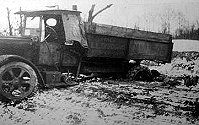 Stuck in the mud old roads Unfortunately, the quality of our roads had barely improved at all since the turn of the century. In 1921, a typical cross-country auto trip contained 1,000 miles of gravel and dirt roads. In Nebraska, a stretch of highway was still criss-crossed by farm field gates, which the driver had to open and close. 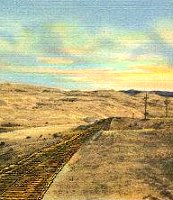 In some areas, even dirt roads weren't possible. For early automobile travel, plank roads were built in sandy areas and elevated log roads were built in marshy areas. Quite a few of them were still around in the 1920s. 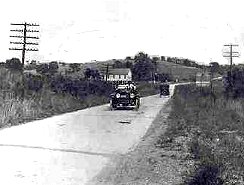 state roads & the good roads movement Although modern roads were few and far between, there was some progress being made. During the 1900s and 1910s, various Good Roads movements were launched in almost every state. In the 1910s, most states also launched state aid highway projects to provide state funding for road construction. Under these programs, new roads were built and older roads received funds for paving, straightening and elimination of grade-level railroad crossings. Many of these roads were under construction in the 1920s. federal roads In 1916, the Federal Highway Act was launched. The goal of this act was to establish a cross-country network of quality roads that would be partially funded by the federal government. The details were ironed out in 1921 when the act was modified to provide each state with funds for the improvement of 7 percent of their highways. Once improved, these roads would become part of the federal highway system. 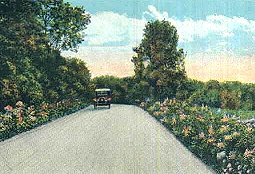 Greetings from Amboy, Illinois Lincoln Highway Route 6--Roosevelt Highway About The Lincoln Highway The Federal Highway Project Lincoln Highway Museum & Archives Minnesota Highway History | ----- | 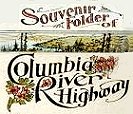 cross-country highways Before the Federal Highway Act was launched, there were a handful of major highways built in the United States. They were begun in the 1900s and 1910s and were either partially or totally paved in concrete. These highways did not have numbers yet....they went by names. In the east, they included the Long Island Motor Parkway, Bronx River Parkway and Midland Trail Roadway. In the northwest, they included the Columbia River Highway. 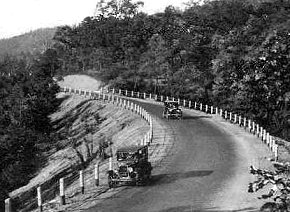 The granddaddy of them all was the Lincoln Highway, which stretched from New York City to San Francisco. The route was assembled from existing highways in 1913 and was partially paved in concrete by 1915. The paving project continued throughout the 1920s and wouldn't be completed until the 1930s. 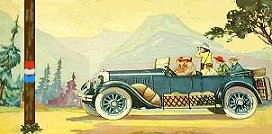 road markings Before 1925, there were no standardized road signs. This made things very confusing! Some roads were marked with nothing more than a dab of paint on a tree or fence. The local highway association marked historic roads, scenic routes and major highways with colored bands on telephone poles. If several highways shared a route, the poles would be striped in many colors. One particular stretch of road had 15 different colored markings! federal highway system In 1925, the federal highway system was mapped out. A highway numbering plan was devised and a set of standardized road signs and markers was designed to go along with it. Major east-west roads received even numbers, with 10 in the north and 90 in the south. Major north-south roads ended in 1 or 5, with 1 in the east and 101 in the west.  A major highway running from Chicago to Los Angeles was begun in 1926, and was given the number 66. 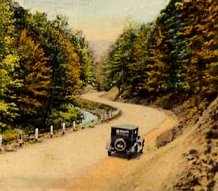 In the east, the Midland Trail Roadway was given the number 6. Using the Lincoln Highway as its inspiration, it was gradually extended westward until it reached the California coast in 1937. In the late 1920s and early 1930s, it was one of several cross-country highways to be known as the Roosevelt Highway. Teddy Roosevelt's death in 1919 spawned all sorts of memorial projects, including several highways. That year, a northern route extending from Maine to Oregon was also renamed the Roosevelt Highway. A third Roosevelt Highway was built along the West Coast from Canada to California. | ||
===========================================================================
===========================================================================
===========================================================================
===========================================================================
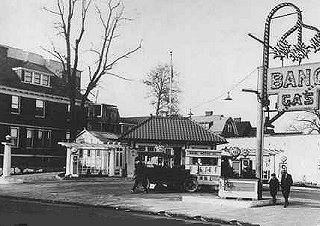
Filling Stations
|
In the 1900s and 1910s, gas was sold by hardware stores and garages as a sideline. At first, it was poured from a can into the gas tank with a funnel. After the first gas pumps and underground tanks were introduced in the mid 1900s, drivers refueled at crude curbside pumps. The first off-road, or drive-in filling stations were introduced in the mid 1900s. The layout of the modern filling station was established in 1913 when Gulf Oil opened a station in Pittsburgh featuring pumps and a small shed for the attendant set back from the street on a corner lot. By the late 1910s, the service station was a common sight on our streets and highways. Except for Standard Oil, each station had a unique look and usually consisted of a simple building or pre-fabricated shed. Standard Oil had adopted a standardized look for all of their stations in 1914. 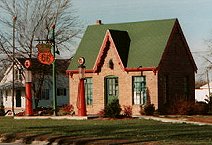 In the 1920s, an increase in the number of gasoline brands created fierce competition. In order to build brand recognition and loyalty, the oil companies began to concentrate on making their stations more attractive. New buildings were designed to resemble cozy cottages or rustic cabins, and some included canopies for all-weather refueling. In 1926, Pure Oil adopted the English cottage look for all of the stations in their chain. This was a popular style that was soon adopted by Phillips 66 and Cities Service stations. Gas stations also attempted to build brand loyalty by providing superior service and free giveaways, like road maps. | ----- |
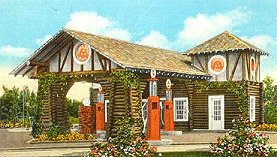 Log cabin service station 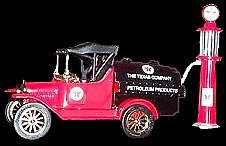 Service stations used visible register pumps. A motor pumped the gas from an underground tank into a glass reservoir, and gravity pulled it down through a hose into the gas tank. A lighted globe on top indicated the brand of gasoline. In 1928, some stations began to use the new all-electric gas pumps. The glass reservoir was removed, and gas was measured automatically and pumped electrically. A round clock face dial displayed the amount of gas being dispensed.  Visible register pumps were extremely large. The glass reservoir had to be very high, because gravity pulled the gas down into the hose. The pump had to hold large amounts of gas, because it took a long time to refill the reservoir. | ||

continue to page 2:
Nightlife & Pleasure Travel
other pages in this section:
Town & Country
Dining & Shopping
return to the 1920s main page